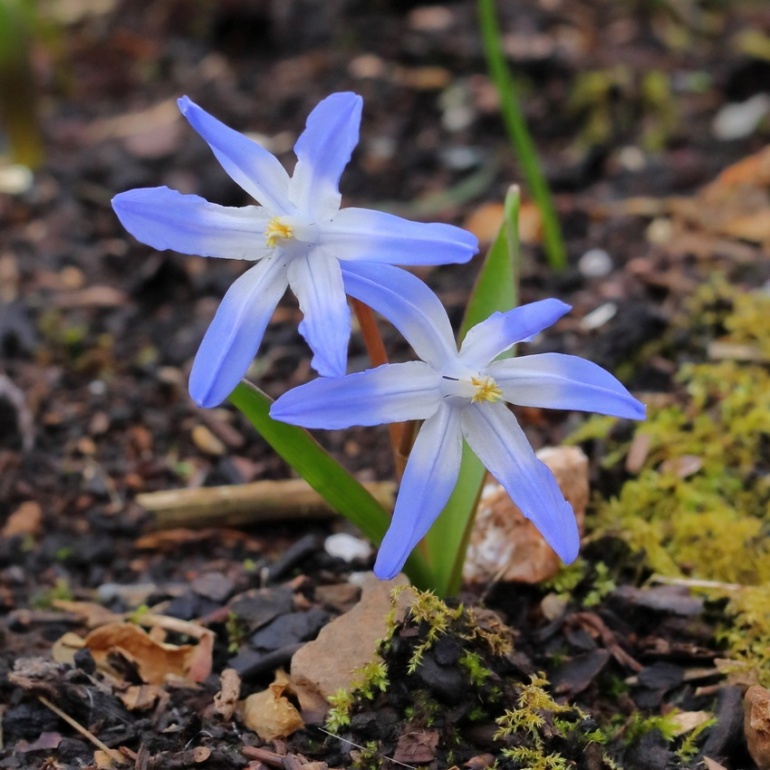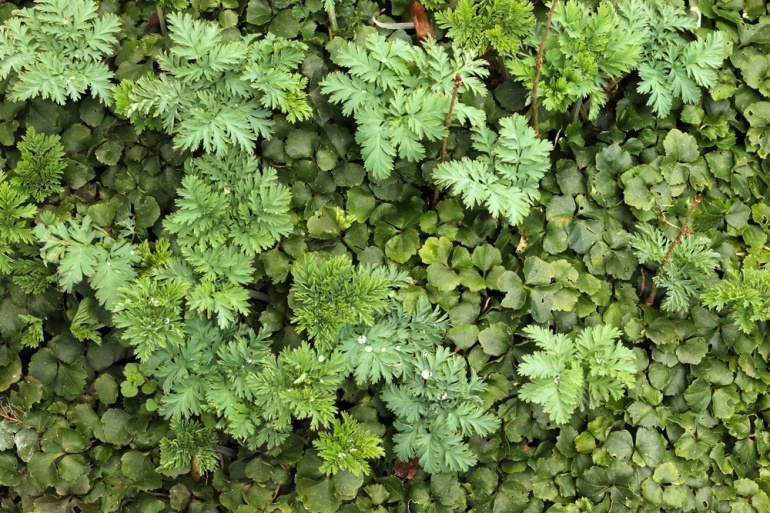Here we go again, six on saturday under the cosh of the weather; imminent rather than recent. Checking heaters and moving things about is the order of the day.
One.
Camellia ‘Annette Carol’. This has long been one of my absolute favourites.. I cut the bush in my garden down last year so it only has a few buds and flowers this year as a result. It was actually raised by the same Australian breeder, Edgar Sebire, as Camellia ‘Adorable’, which I featured last week. They’re all going to get fried in the next couple of days.

Two.
Double Primroses. My order from Barnhaven has arrived. Nice fresh young plants that should grow away well. I unpacked them and stood them out in the rain. They may as well get used to it.

Three.
Chionodoxa luciliae. Chionodoxa has now been sunk into the genus Scilla, so these are now Scilla luciliae. They have been spreading slowly by seed for some years and last year I split a clump and spread them about to help things along. Blue flowers can get a bit lost but these stand out well, perhaps because of the white eye.

Four.
Pachyphragma microphylla. The pressure of finding six new things each week, especially now, when not a lot is happening, means that things get included before they’re at their best. Pachyphragma is the sort of plant that could easily be damned with faint praise as merely useful. It does it’s thing early, in March and April and is an effective ground cover in shade, with pure white flowers freely produced. It seeds about but harbours no ambitions to rule the world. Not yet, anyway.
Five.
Corydalis solida ‘Beth Evans’. If you google this you get a suspiciously wide range of colours in the results. This one has been in a glasshouse, perhaps that’s why it’s so pale. I did intend to plant it out but never got around to it. Years ago, a plant of the species, with blues/mauve/pinky flowers, just appeared in the garden. It is the most ephemeral of plants, appearing in March and vanishing by early summer. It makes it vulnerable to being disturbed or having other things grow on top of it, in this case a self sown primrose.
Six.
Lush greenery is a lot better than bare ground at any time of year. When a couple of things will coexist happily it can be very attractive, even without flowers. Here I have Dicentra formosa pushing its ferny glaucous leaves up through a dense mat of Cardamine trifolia. The Dicentra will produce its pendant white flowers later but the Cardamine is a shy flowerer in these conditions. In better light it is very like the Pachyphragma in miniature.

Which adds up to six. Do check out the other sixer’s contributions linked to The Propagators weekly posting.




Those strikingly blue flowers of the Scilla are outstanding. What a good photo
LikeLiked by 1 person
I’m in love w/that dicentra/cardamine combo. Got some nice shady patches in my new garden, so I plan to steal your idea, but I’ll raise a tiny plaque in your honour that says, Jim’s wee rumination garden.
LikeLike
The combo effect is quite fleeting, in that the Dicentra will be hiding the Cardamine in a few weeks time and then dies away in autumn so the Cardamine has it all to itself for winter. I battle the Dicentra constantly.
LikeLike
The photo looks like you’ve a few dicentra in the mix – or does the cardamine grow up between the dicentra stems? And by battling it, does that mean your dicentra propagates like crazy? I’ve never had mine do that – can you expound a bit? (Is is growing conditions, type of dicentra, bad luck, ill temper, etc.)
LikeLike
The Cardamine spreads very slowly and makes a really dense mat of leaves about 3 inches high. The Dicentra has underground rhizomes that grow quite fast with shoots popping up fairly well spaced but over a fast expanding area. It means it isn’t easily contained in an allotted area, which is fine if it encroaches on things like Cardamine that can hold their own, not so good when it threatens a choice Polygonatum or Disporum. When it does, I pull it out. For a long time I regarded the white Dicentra formosa form that I have as less invasive than the pink ones we’ve had, now I’m not so sure. The pinks were spreading by rhizomes and seed. Equally, I have planted good forms of both pink and white and they’ve not lasted a year. Presumably it is down to growing conditions but I think luck has a part to play. My frequently ill temper, not so much.
LikeLiked by 1 person
Oh Jim every week I look forward to seeing what plants you will delight us with………..and every week you don’t fail, what a great six and you have reminded me I need some special primroses for my pots.
LikeLike
You’re very kind. It hasn’t been easy just recently but I still have a few up my sleeve.
LikeLiked by 1 person
Love the greenery.
LikeLiked by 1 person
I have the same Chionodoxa though not so fully out as yours. Suppose I have to call them Scilla now – a bit easier to spell at least!
LikeLiked by 1 person
I read about your Corydalis with great interest. It IS vulnerable to having other things planted on top of it and I’ve had exactly the same situation your Corydalis/Primula photo depicts. My garden mind map completely fails me at times.
LikeLiked by 1 person
Those teeny blue flowers are lovely! Snowing lightly here and with a 5 degree windchill. I have retreated from the potting shed (which is heated) cos my feet were like blocks of ice! The heater is at table level and obviously the heat rises. Brrr.
LikeLike
Getting colder here too, though the rugby is so hard to watch I might just go back outside!
LikeLike
I tweeted about Chionodoxa this afternoon ( https://twitter.com/frdvil/status/974968005460484096 ) but mine are forbesii. Lovely flowers !
I also like your light pink camellia but I’m afraid of the coming frosts….
LikeLike
I like Pachyphragma too! It is such an undemanding plant for shade. When in full flower, it lights up a dark space.
LikeLiked by 1 person
‘They may as well get used to it.’ You are hilarious!
LikeLiked by 1 person
I took pity on them and brought them in for the forecast three day freeze up, they’re clearly tunnel grown.
LikeLike